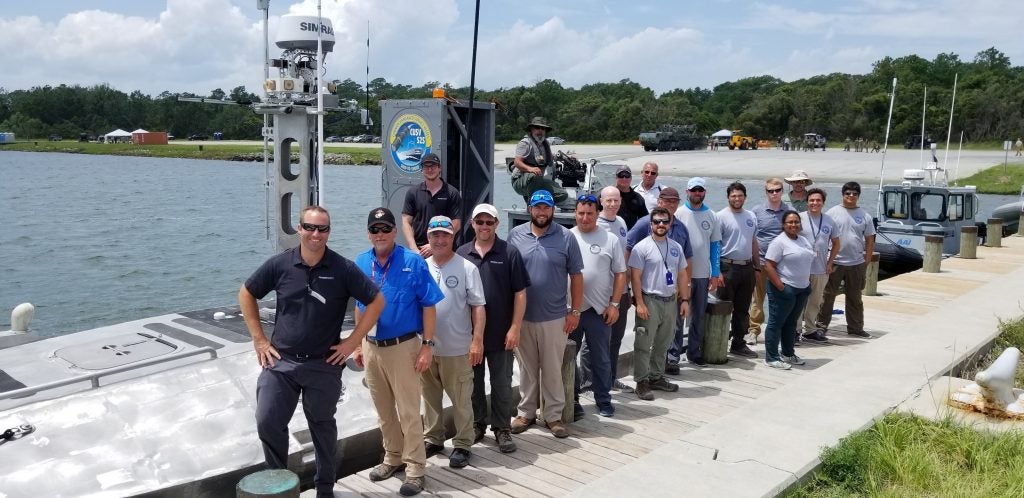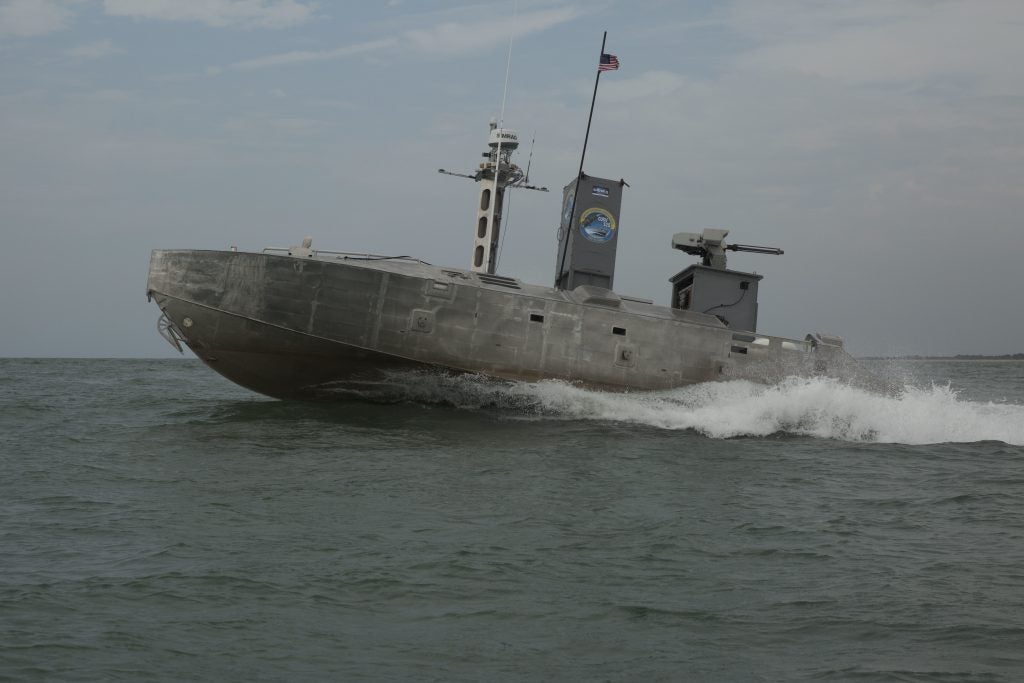Expeditionary Warfare Unmanned Surface Vehicle Demonstrated for Marine Corps and Navy
The Expeditionary Warfare Unmanned Surface Vehicle (USV), developed by engineers at the US Naval Surface Warfare Center, Dahlgren Division (NSWCDD) and their industry partner, Textron Systems Unmanned Systems, debuted at the 2019 Advanced Naval Technology Exercise (ANTX) with a live demonstration of the system to Marine and Navy senior officers.
Textron System’s Common Unmanned Surface Vehicle (CUSV) platform provided the basis for the USV. The CUSV itself was unveiled in 2009, with Textron defining the platform as capable of a number of roles; “… including side-scan sonar, mine neutralization, nonlethal weapons, and intelligence, surveillance and reconnaissance sensors.”
Three CUSVs are serving with the US Navy under the Mine Counter Measure Unmanned Surface Vehicle (MCMUSV) project. The Expeditionary Warfare USV can operate for more than 20 hours in rough seas, up to Sea State 5, and can launch from ports, well decks and both classes of Littoral Combat Ships currently in US Navy service. Radar and live video is employed to navigate the USV by a remote operator and to identify and track surface contacts of enemy vessels. Once targets are identified as hostile, the operator can choose to engage with a range of weapon systems.
The Expeditionary Warfare USV is armed with the FN Herstal SeaDeFNder Remote Weapon Station (RWS) mounting a .50 heavy machine gun driven by an Automated Remote Engagement System (ARES) detection and sensor system, and an AGM-114L Hellfire Longbow anti-tank guided missile (ATGM) platform mounted in a Battle Management System vertical launcher.

Bob Gripshover, one of the NSWCDD engineers noted; “With these autonomous systems and automated weapons, we are trying to automate enough of the kill chain to allow the human-machine team to react fast enough to deal with multiple incoming threats. We’re not trying to develop weapons where the machine is in control. We are trying to find the right balance- where the human and machine are both doing what they do best. The machine can search autonomously for potential threats and targets while the human can make the decision on those targets and decide when to engage them. ”

